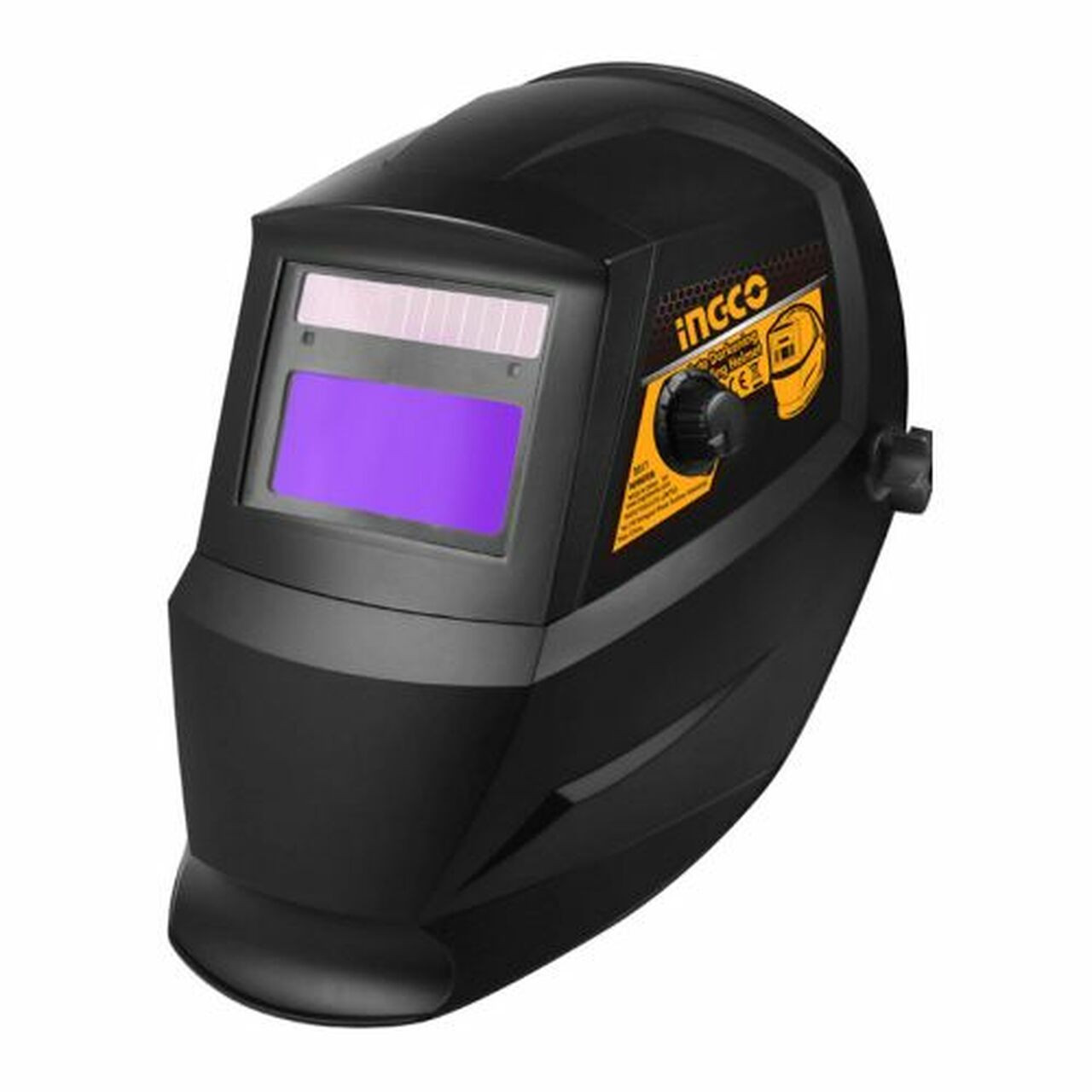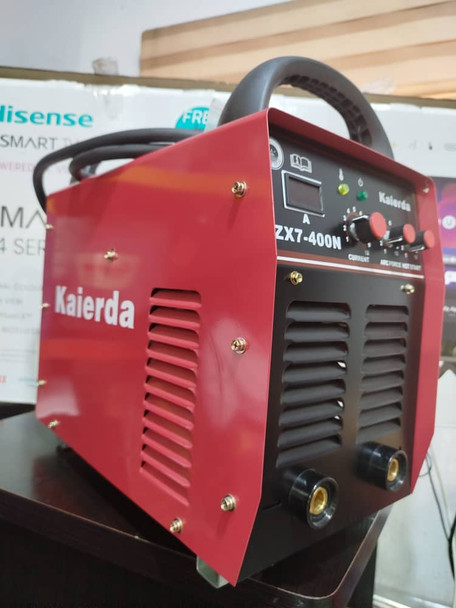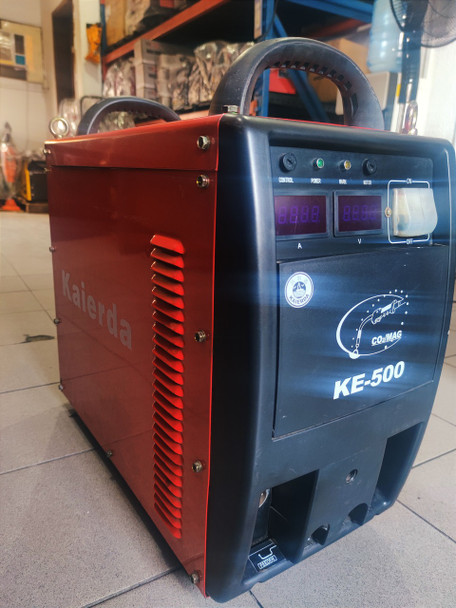Essential Welding Tools and Equipment for Every Workshop
Key Takeaways
- Basic and Advanced Welding Tools: Every welding workshop should include basic equipment such as welding machines, electrodes, clamps, and personal protective equipment, as well as advanced tools like angle grinders and welding positioners to ensure flexibility and precision.
- Safety as a Priority: Personal protective equipment (PPE) like welding helmets, gloves, and fire-resistant clothing is crucial in ensuring the safety of welders from hazards such as burns, UV radiation, and flying sparks.
- Efficiency Boost: Equipping your workshop with high-quality welding tools not only boosts efficiency but also enhances the quality of your welds, making it easier to complete both simple and complex welding projects to professional standards.
Introduction
Welding is a fundamental process in many industries, from construction and manufacturing to automotive repairs and metalworking. For any workshop to perform welding tasks efficiently and safely, having the right tools and equipment is essential.
A welding helmet is one of the most crucial safety tools for any welding workshop. It protects the welder's face and eyes from harmful sparks, UV rays, and intense light produced during welding. Modern welding helmets often come with auto-darkening features, which adjust the lens shade automatically based on the intensity of the light, allowing for a seamless transition between welding and inspection. This feature not only enhances productivity but also provides added convenience and safety. With various types and designs available, a good-quality welding helmet ensures that welders can work comfortably for extended periods without risking their vision or skin.
Whether you're a professional welder or a DIY enthusiast, having the correct welding tools and equipment is vital for both safety and efficiency. Each welding technique, whether it's MIG, TIG, or Stick, requires specific gear. In this guide, we’ll explore the essential welding tools and equipment every workshop should have to ensure optimal results.
INGCO Auto Darkening Welding Helmet AHM008
1. Basic Welding Safety Gear
Welding Helmet
A welding helmet is arguably the most important piece of safety gear for any welder. The intense light and UV radiation from the welding arc can cause serious eye damage, including "arc eye" or retinal burns. Modern welding helmets are often auto-darkening, which means they automatically adjust to the intensity of the light. This feature improves visibility when not actively welding and offers added protection during the weld itself.
Welding Gloves
Welding gloves are another essential safety item. They are typically made of leather and are heat-resistant. However, the type of gloves you need may depend on the welding method. For instance, MIG welding gloves are usually thicker to withstand higher heat, while TIG gloves offer more dexterity for detailed work.
Welding Jacket/Apron
A flame-resistant jacket or apron helps protect the welder from sparks, heat, and ultraviolet radiation. Leather and other fire-resistant materials are recommended for this gear, especially in high-temperature settings like heavy-duty welding or overhead welding jobs.
Welding Boots
Welding boots are specially designed footwear made from heat-resistant materials. These boots often come with reinforced toes to protect from falling objects and provide insulation from electrical hazards. High ankle coverage helps guard against sparks and molten metal.
Respiratory Protection
Many types of welding release harmful fumes and gases, such as ozone, nitrogen oxides, and carbon monoxide. To protect against this, respirators or fume extractors should be used. These systems can be as simple as disposable face masks for occasional use, or full-scale fume extraction systems for heavy-duty welding.
2. Welding Machines and Power Sources
MIG (Metal Inert Gas) Welders
MIG welding is one of the most commonly used welding processes, and for good reason. It's relatively easy to learn and highly versatile. MIG welders use a consumable wire electrode that is fed through the welding gun, which melts and joins metals together. These machines are ideal for welding mild steel, stainless steel, and aluminum. They are perfect for beginners and experienced welders alike, making them a staple in any workshop.
TIG (Tungsten Inert Gas) Welders
TIG welding is more complex than MIG but offers more precision, especially for thinner materials and metals like stainless steel and aluminum. It uses a non-consumable tungsten electrode, and welders often have manual control over the filler rod. This allows for more intricate and detailed welds, but requires a higher skill level and slower process.
Stick (SMAW) Welders
Stick welders, also known as Shielded Metal Arc Welding (SMAW) machines, are great for outdoor welding and rough conditions. These welders use an electrode coated in flux that melts to create a strong weld, even in windy or dirty conditions. They are highly portable and a good choice for heavy-duty projects, such as structural welding or repairs on metal surfaces.
Multi-Process Welders
For those who want a more versatile machine, multi-process welders are ideal. These machines can handle multiple types of welding—MIG, TIG, Stick—in one unit. While more expensive, they save space and allow welders to switch between methods without needing separate machines for each process.
Plasma Cutter
While technically not a welder, a plasma cutter is an invaluable tool in any welding workshop. It uses ionized gas to cut through metal with extreme precision, which is useful when preparing metal pieces before welding. Plasma cutters are fast and accurate, making them a must-have for any serious metalworker.
Kaierda Inverter DC MMA Welding Machine ZX7-400N
3. Hand Tools for Welding Preparation and Finishing
Angle Grinder
An angle grinder is a versatile tool that is critical for both pre- and post-welding tasks. Before welding, grinders help clean the metal surface by removing rust, paint, or mill scale. After welding, they can smooth out rough welds, clean off slag, or cut metal to size. With various attachments available, including grinding wheels and cutting discs, angle grinders are a must for any workshop.
Chipping Hammer and Wire Brush
For stick and flux-core welding processes, the slag left behind needs to be removed to reveal the weld underneath. A chipping hammer is used to break off the slag, while a wire brush is used to clean the weld surface. These tools are basic but essential for quality finishes.
Clamps and Magnets
Clamps and welding magnets are crucial for holding pieces of metal in place during the welding process. This ensures accurate welds and makes the process safer by preventing sudden movements of the workpiece. Whether you’re welding large sheets or intricate pieces, clamps provide stability, while magnets offer quick adjustments.
Measuring Tools (Calipers, Squares, Tapes)
Precision is key in welding, and that’s where measuring tools come in. Calipers, squares, and measuring tapes help ensure that your metal pieces are aligned properly and the welds are placed where they should be. These tools are particularly important when working on projects that require tight tolerances.
Welding Consumables
Electrodes (Stick Welding)
Electrodes, or welding rods, are a crucial consumable in stick welding. The electrode serves two purposes: it acts as the filler metal to join the workpieces, and its coating provides flux to protect the weld area. There are different types of electrodes for different materials and conditions. For example, E6010 electrodes are often used for deep penetration welding, while E7018 rods provide smoother, cleaner welds.
Welding Wire (MIG Welding)
MIG welding relies on a consumable wire that serves as both the electrode and the filler material. MIG wire comes in various types depending on the metal being welded. For example, ER70S-6 is a commonly used mild steel wire, while aluminum wires are used for welding non-ferrous metals. It’s important to choose the right wire diameter and type for the specific welding application to achieve strong, clean welds.
Filler Rods (TIG Welding)
In TIG welding, the welder manually feeds filler rods into the weld pool to add material. These rods come in different compositions, tailored to the material being welded, such as stainless steel, aluminum, or bronze. Choosing the correct filler rod ensures a smooth and durable weld. TIG welding requires more precision with filler rods since improper selection can lead to weak joints or poor finish quality.
Shielding Gas
In both MIG and TIG welding, shielding gas is necessary to protect the weld from contaminants in the air, like oxygen and nitrogen, which can cause weld defects such as porosity or oxidation. The most commonly used gases are argon, carbon dioxide, or a mixture of both, depending on the welding process and material. For example, pure argon is often used for TIG welding aluminum, while a mix of argon and CO2 is more common for MIG welding steel.
5. Welding Tables and Workstations
Sturdy Welding Table
A solid welding table is an essential piece of equipment in any workshop. These tables provide a stable, heat-resistant surface where workpieces can be clamped, measured, and welded. A good welding table is usually made of steel and has holes or slots for inserting clamps and tools. Some tables are grounded to provide electrical safety during welding. A flat, durable surface ensures that your work remains precise and that you can work comfortably for extended periods.
Adjustable Workstations
Adjustable workstations are ideal for welders working on projects of different sizes and complexities. These tables can often be tilted or moved to various heights, allowing the welder to work at the best angle. Adjustability is particularly helpful when working on larger projects or when doing intricate welds that require more flexibility.
Rotating Welding Positioners
For more complex or cylindrical parts, rotating welding positioners make it easier to maintain a steady hand and weld evenly. These tools allow the welder to rotate the workpiece smoothly, ensuring consistent weld quality on round or awkwardly shaped items. Welding positioners are especially useful in industrial settings where precision and speed are required for high-volume work.
YAWATA 7018 Arc Welding Electrode
6. Fume Extraction and Ventilation Systems
Portable Fume Extractors
Welding fumes contain harmful gases and fine particles that can be hazardous to health, especially over prolonged exposure. Portable fume extractors are designed to remove these fumes directly from the welding area, ensuring cleaner air for the welder. These units are compact and can be moved around the workshop, making them ideal for small to medium-scale welding operations.
Ventilation Systems
In addition to portable fume extractors, a well-ventilated workspace is crucial for maintaining air quality. Workshops with proper ventilation systems ensure that harmful fumes and gases are continuously removed from the environment, providing a safer space for prolonged welding. This is especially important in large or enclosed areas where fumes can accumulate quickly.
7. Optional Advanced Equipment
Welding Robots and Automation Tools
In high-volume industrial settings, welding robots and automated tools can significantly increase efficiency and precision. These machines are programmed to perform repetitive welding tasks with extreme accuracy, reducing the likelihood of human error and increasing production speed. While not necessary for small-scale workshops, welding robots can be a game-changer for larger operations focused on mass production.
CNC Plasma Cutters
CNC (Computer Numerical Control) plasma cutters take metal cutting to a new level of precision. These machines allow welders to program intricate cuts into the machine, ensuring highly accurate results. They are especially useful in workshops that produce custom or detailed metal components. While the initial investment is significant, CNC plasma cutters provide long-term benefits in terms of accuracy, speed, and efficiency.
8. Maintenance and Storage Tools
Tool Storage Units
Proper organization is key in any workshop. Welding tools, consumables, and safety gear should be stored in a way that makes them easy to access while keeping them safe from damage. Tool storage units, such as cabinets and rolling carts, help ensure that everything is kept organized. These units come in various sizes and types, including drawers for smaller items and shelves for larger tools like grinders and welding helmets.
Maintenance Kits
Regular maintenance is critical to keeping welding equipment functioning optimally. Maintenance kits typically include wire brushes, electrode cleaners, nozzle gels, and other accessories that help clean and preserve welding machines and tools. Routine care ensures that the equipment remains in good working condition, reducing the likelihood of malfunctions and extending the overall lifespan of your tools.
Kaierda Gas-Shielded Welding Machine CO2/MAG KE-500
Frequently asked Questions
1. What type of welding machine is best for beginners?
For beginners, a MIG (Metal Inert Gas) welder is often the best choice. It's relatively easy to use, highly versatile, and offers good control over the welding process, making it ideal for learning and handling a variety of projects.
2. How often should welding equipment be maintained?
It’s recommended to perform basic maintenance after every use. This includes cleaning nozzles, checking wires, and ensuring that all connections are secure. For more in-depth maintenance, such as replacing worn parts or checking the machine’s internals, a quarterly or semi-annual schedule is ideal, depending on usage.
3. Is TIG welding harder than MIG welding?
Yes, TIG (Tungsten Inert Gas) welding is generally more challenging than MIG welding. TIG welding requires more manual dexterity and precision because the welder has to control the torch and filler rod simultaneously. It’s often used for more detailed work on thin metals.
4. What personal protective equipment (PPE) is essential for welding?
Essential PPE includes a welding helmet, gloves, jacket or apron, boots, and respiratory protection. These items protect against hazards like sparks, UV radiation, heat, and harmful fumes, ensuring both safety and comfort during welding.
5. Can I use the same welding machine for different materials?
Yes, many welding machines, especially multi-process welders, can be used for different materials. For example, a multi-process welder can handle steel, aluminum, and stainless steel using the appropriate settings, electrodes, or filler rods.
Related Article
12 essential welding equipment for fabrication work
Essential Welding Equipment for Professionals: A Complete Checklist
Conclusion
Investing in the right welding tools and equipment is crucial for both efficiency and safety in any welding workshop. From basic safety gear like helmets and gloves to advanced welding machines and ventilation systems, having the proper setup allows you to produce high-quality welds and ensures your workspace is safe. Regular maintenance and proper storage of your tools will also prolong their lifespan, keeping your workshop running smoothly.
If you're looking to equip or upgrade your welding workshop, check out Tikweld Welding Supplies for a wide selection of high-quality welding tools, machines, and accessories. Whether you're a beginner or a seasoned professional, Tikweld has the right equipment to meet your needs.













